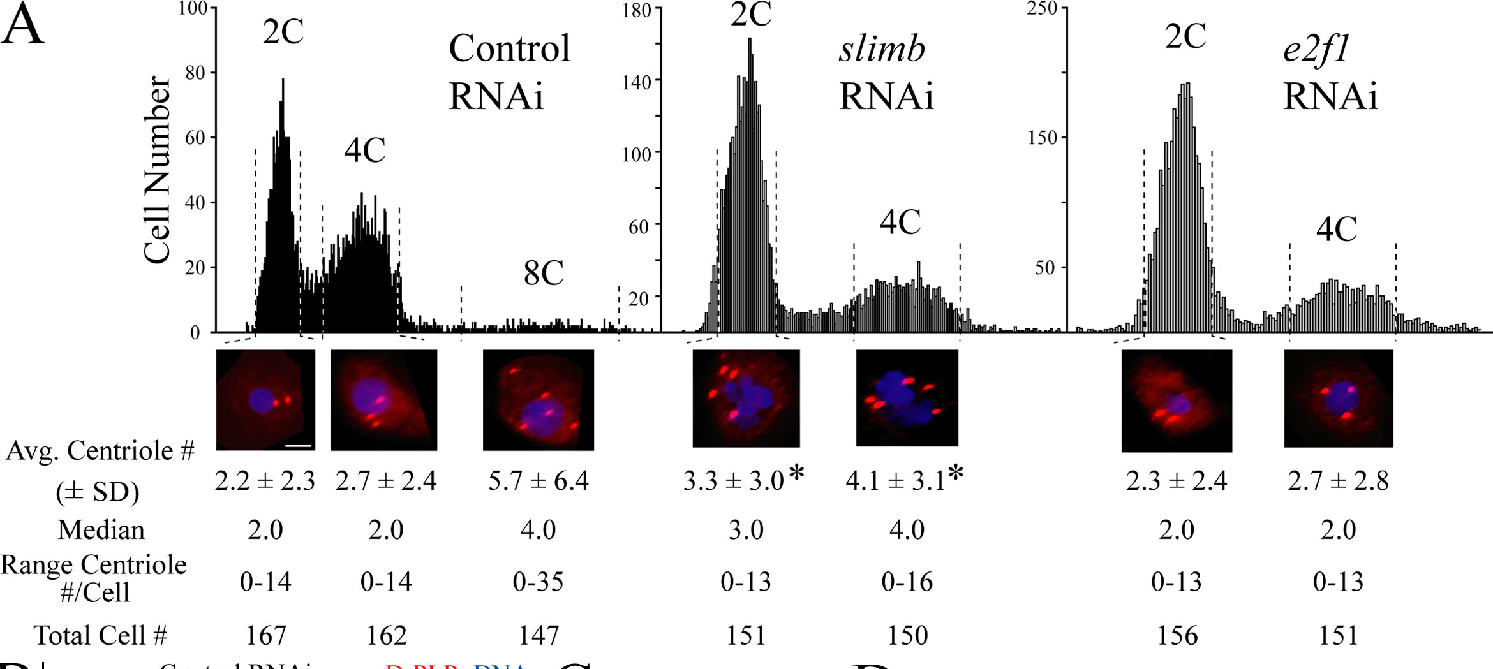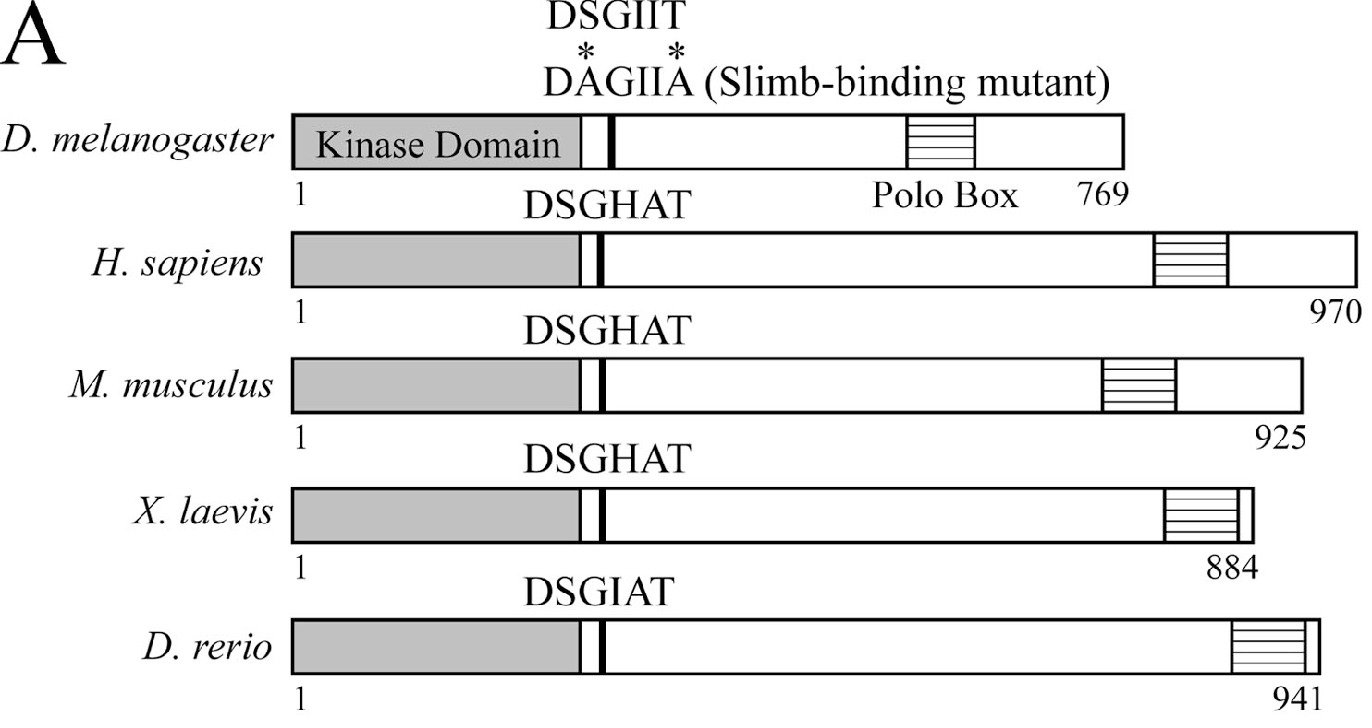Abstract
In order to prevent genomic instability, the restriction of the centriole duplication is an important condition. However, the essence of this mechanist remains unclear for modern scientists. There are two possible effects of Slimb depletion. First, they can restrain the duplication of centrioles, second, they can lead to the disengagement of these centriole. (Rogers et al. 2009) This study is aimed at describing the mechanism that prevents the centriole reduplication in Drosophila melanogaster where the SCF E3 ubiquitin ligase together with the F-box protein Slimb intervenes proteolytic degradation of the centrosomal regulatory kinase Plk4. (Rogers et al. 2009).Skp/Cullin/F box (SCF)-class ubiquitin ligases in this process. The results of this study not only show that the SCF Slimb’s function is to regulate the central duplication while targeting the key centrosomal regulator Plk4 for proteolytic degradation, but also provide a contribution to the centrosome reduplication block mechanism. (Rogers et al. 2009).
Introduction
Slimb plays a great role in the centiole reduplication and regulating their number, because mutations that occur in all sub-units affect this process. Even slight errors may affect the structure of cells which can result in cells with an insufficient or exigent number of centrosomes which, in its turn, it leads to the genomic instability (Brinkley 2001). The authors of the research hypothesized that that SCF Slimb ubiquitinates form of Plk4 on centrioles in order to control centriole duplication (Rogers et al. 2009). The aim of this study is to understand the mechanism of regulation that affects the centrosome duplication which will be a valuable funding for understanding of the cell behavior and preventing mechanisms of the cell mutations.
Background of the study
Researchers on centriole rediblication and genome instability provided the basis for the given study. Thus, previous results provide that centrosomes, like DNA, are duplicated only once per cell cycle (Wong and Stearns, 2003). The study provided by Nigg (2006) assumes that there is a correlation between excess centrosomes, aneuploidy, and cancer (which is a mutation of cells). However, the causes and consequence of these correlations are unclear. Thus, understanding of the cells regulatory mechanisms is important to understand the work of the robust mechanism in cells that blocks the reduplication (Hinchcliffe et al. 1998, Wong and Stearns 2003, Tsou and Stearns 2006b ). According to the studies provided by Blow and Dutta (2005 ). Deshaies, 1999 and DePamphilis et al., 2006, The DNA replication can provide an insight into this process. In the S phase, there are several active mechanisms that prevent the DNA replication. The E3 ubiquitin ligases limits the destruction of the replication-initiation factors (DePamphilis et al. 2006).
Methods and Results
The methods used in the study include:
- The use of TRIZOL (Invitrogen) to separate total RNA from untransfected or SAS-6p for closer consideration.
- Immunofluorescence microscopy.
- Immunoblotting to measure protein concentration (Rogers et al. 2009)
- Immunoprecipitation
- Centriole purifi cation.
- Transmission EM.
- Live cell microscopy to observe the cells behavior.
The study under consideration showed the results that follow:
The SCF Slimb is a regulator of centriole duplication via an RNA interference (RNAi) screen of Cullin-based ubiquitin ligases (Rogers et al. 2009).

This figure shows that Slimb depletion elevates the number of centrioles in both phases (2C and 4C populations).

The SCFSlimb target is how Plk4 binds to Slimb. Both of them are localized to centrioles. The highest levels of Plk4 are at mitosis phase, and they are absent during the S phase. The Plk4 can bind the Slimb and be a ubiquitination substrate. (Rogers et al. 2009).

The study has also showed that Slimb is a means to regulate the Plk4 localization to centrioles during the interphase. Consequently, it regulates the number of centrioles and ensures the block to centriole reduplication (Rogers et al. 2009).
Conclusion
The main findings of this study present evidence to the following insights:
- SCF Slimb is identified by the An RNAi screen for Cullin-based ligase. The data has shown that SCF Slimb provides limitations for the centriole overduplication.
- The role of Slimbs is different in cell cycle progression and they are localized to centrioles.
- The target for the Slimb ubiquitination is the Plk4 (tumor suppressor). The levels of Plk4 are the highest during the mitosis and cannot be detected during the S phase.
The main funding of this study is that Slimbs play a crucial role in the reduplication
Block. It regulates the Plk4 on centrioles that regulates the genomic stability and prevents the reduplication (mutation of the cells that can lead to canser).
Reference List
Blow, J.J. & Dutta, A. 2005, “Preventing re-replication of chromosomal DNA”, Nat. Rev. Mol. Cell Biol, 6, pp. 476 – 486.
Brinkley, B.R. 2001, “Managing the centrosome numbers game: from chaos to stability in cancer cell division”, Trends Cell Biol. Vol. 11, pp. 18 – 21.
Deshaies, R.J. 1999, “SCF and Cullin/Ring H2-based ubiquitin ligases. Annu. Rev”, Cell Dev. Biol, 15, pp. 435 – 467.
Gregory C. Rogers, Nasser M. Rusan, David M. Roberts, Mark Peifer, & Stephen L. Rogers. 2009, “The SCF Slimb ubiquitin ligase regulates Plk4/Sak levels to block centriole reduplication”, The Journal of Cell Biology. Vol. 184, No. 2, pp. 225–239.
Hinchcliffe, E.H., Cassels, G.O., Rieder, C.L., & Sluder, G. 1998, “The coordination of centrosome reproduction with nuclear events of the cell cycle in the sea urchin zygote”, J. Cell Biol, 140 pp. 1417 – 1426.
Nigg, E.A. 2006, “Origins and consequences of centrosome aberrations in human cancers”, Int. J. Cancer ,119, pp. 2717 – 2723.
Tsou, M.F & Stearns, T. 2006b, “Mechanism limiting centrosome duplication to once per cell cycle”, Nature, 442, pp. 947 – 951.
Wong, C. & Stearns, T. 2003, “Centrosome number is controlled by a centrosome-intrinsic block to reduplication”. Nat. Cell Biol. Vol. 5, pp. 539 – 544.